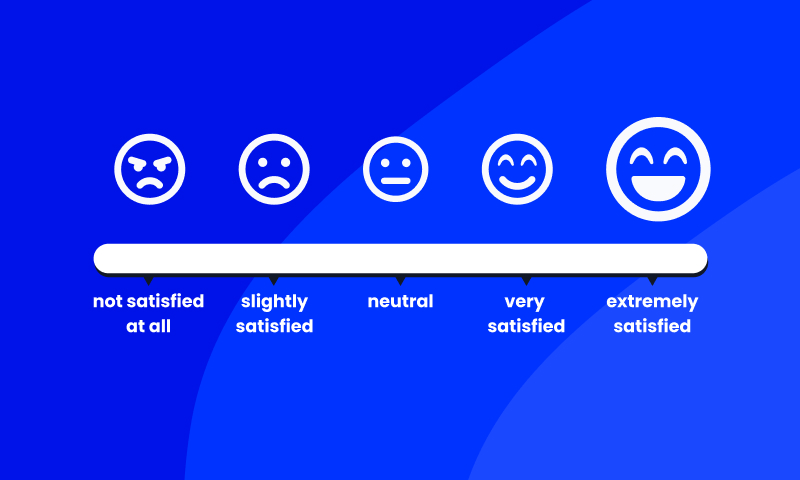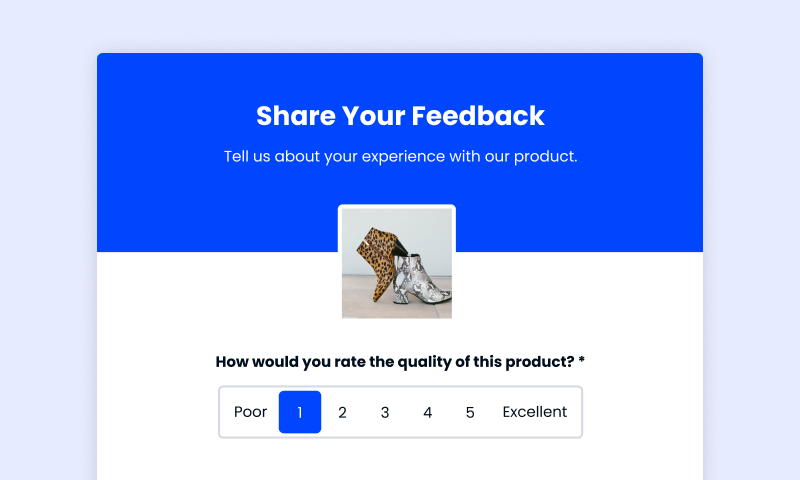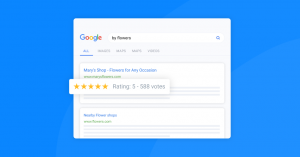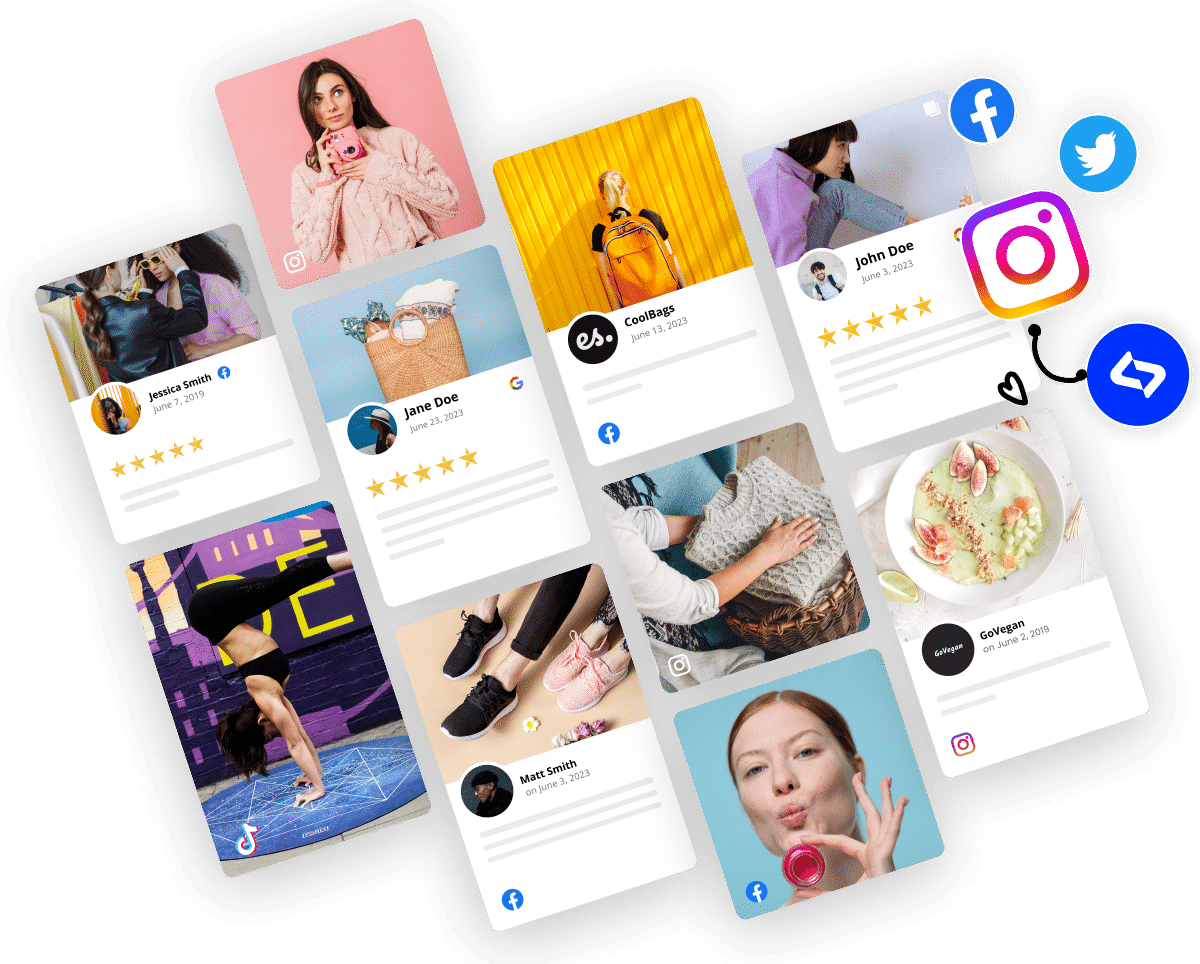Likert scales are one of the most common research methods used in both paper and online surveys. They are a quick and easy way to get a sense of how people feel about an issue, product, or service.
Almost every survey has these question types. It is very likely that by now, you have also filled out a survey in which the offered answer options ranged from very good to very bad.
In this blog post, we’re going to talk about some Likert scale examples, so you can decide for yourself what works best for you to achieve your goals.
Also, you will learn what the Likert scale is, what Likert-style questions you can implement in your survey template, and how you can design a Likert-type scale in few easy steps.
Let’s dive in.
What’s inside?
1. What is a Likert scale?
2. Likert scale examples
3. Examples of Likert scale questions to measure customer satisfaction
4. Steps to design a Likert scale
What is a Likert Scale?

The Likert scale is a rating system/ rating scale used in surveys and questionnaires to measure people’s attitudes, opinions, or perceptions.
The psychometric scale is named after the renowned psychologist Rensis Likert, who invented the Likert scale to measure the intensity of feelings.
When answering Likert scale questions, respondents need to choose an answer that implicates to what extent they agree or disagree with a given series of statements.
For example:
“The website has a user-friendly interface.”
Then respondents have to choose some of the following answers:
- Strongly agree
- Agree
- Neutral
- Disagree
- Strongly disagree
You can also find these statements in the literature named as Likert items.
Besides the level of agreement, researchers can also use the Likert scale for measuring the frequency, likelihood, importance, and quality of a product or service.
This is done by giving relevant Likert scale responses, which we discuss in the Likert scale examples section.
The Likert scale is an integral part of many studies, both complex and straightforward. It is one of the easiest and most popular ways to get information related to customers’ feelings and opinions about a particular product or service.
Likert Scale Examples
Respondents may be offered a scale of 3 to 7, or even 9 previously offered answers. Also, there is a neutral option offered for the undecided respondents at the midpoint of the answer options.

Each of these categories has a numeric value used to measure respondents’ attitudes and opinions.
The number of responses depends on how in-depth and diverse the data you want to collect for your research.
Agreement:
Three-point Likert scale example for agreement
- Agree
- Neither agree nor disagree
- Disagree
Four-point Likert scale example for agreement
- Strongly agree
- Agree
- Disagree
- Strongly disagree
Five-point Likert scale example for agreement
- Strongly agree
- Agree
- Neither agree nor disagree
- Disagree
- Strongly disagree
Seven-point Likert scale example for agreement
- Strongly agree
- Agree
- Somewhat agree
- Neither agree nor disagree
- Somewhat disagree
- Disagree
- Strongly disagree
Satisfaction:
Four-point Likert scale example for satisfaction:
- Very satisfied
- Satisfied
- Dissatisfied
- Very dissatisfied
Five-point Likert scale example for satisfaction
- Highly satisfied
- Satisfied
- Neutral
- Dissatisfied
- Highly dissatisfied
Seven-point Likert scale example for satisfaction:
- Completely satisfied
- Mostly satisfied
- Somewhat satisfied
- Neither satisfied nor dissatisfied
- Somewhat satisfied
- Mostly dissatisfied
- Completely dissatisfied
Frequency:
Four Point Likert Scale Example for Frequency
- Never
- Rarely
- Often
- Every Time
Five-point Likert scale for frequency
- Never
- Rarely
- Sometimes
- Often
- Every time
Likelihood:
Four-point Likert scale example for likelihood
- Very unlikely
- Unlikely
- Likely
- Very likely
Five-point Likert scale example for likelihood
- Very unlikely
- Unlikely
- Neither likely nor unlikely
- Likely
- Very likely
There are several other examples, such as scales with 2, or 6 point Likert scales. Likert scales with two answers are most often used to measure agreement and offer the answers agree and disagree.
Such scales that measure opposite forces like the 2-point Likert scale are called bipolar scales. The other Likert rankings with more solutions can help you in collecting more diverse data. These ranking scales are called unipolar because they offer more answer options that rank from very satisfied to very unsatisfied.
The Likert scale is excellent for accurate data collection because it requires respondents to think more about their answers versus questions that offer only yes / no solutions.
However, respondents may show a dose of bias when answering Likert scale questions of a more sensitive nature. That is why when conducting any survey, anonymity always contributes to correct and honest answers.
Examples of Likert Scale Questions by Industry
We mentioned that the Likert scale is a great way to measure feelings.
This is why this rating scale is used in many customer satisfaction surveys where it is used to measure customers’ feelings towards a particular product or service.
Below is a list of sample questions types for a few industries that you can use in your following survey research.

SAAS Likert scale survey question examples:
- How well our product meets your needs?
- How would you rate the value for the money of the product?
- How easy is it to use our product?
- How often do you use our product?
- How well our team handled your questions?
- Compared to competitors, how would you rate our product?
- How likely are you to buy again from us?
Restaurants Likert scale survey question examples:
- How often do you dine at our restaurant?
- How would you rate our food?
- How would you rate the staff friendliness?
- How would you rate the reservation process?
- How likely is it that you would return?
Hotel Likert scale survey question examples:
- How would you rate our service?
- How likely are you to recommend this hotel?
- Overall were you satisfied, dissatisfied, or neither?
- How would you rate the hotel food?
- How would you rate the booking process?
Online shops Likert scale survey question examples:
- How likely is it that you would recommend our shop to others?
- How would you rate the quality of our product?
- How easy was it for you to navigate our website?
- How often do we have what you’re looking for in stock?
- How easy was it for you to find something in your size?
Event Likert scale survey question example
- Overall, how would you rate the event?
- Please rate the speakers.
- Please rate the location.
- Please rate the food and beverage.
- Please rate the networking session.
Steps to design a Likert scale
Online form builders are a huge help for every survey creator.
You can choose between multiple types of templates and customize them any way you want. Furthermore, with EmbedForms, you can design a Likert scale in less than a minute, and here is how:
- Login or create an account.
- Choose a template.
- Choose opinion scale or radio buttons.
- Copy the answers from above and click save.
And that’s it!
The quantitative data is gathered in one place from where you can monitor the real-time submissions.
Now you can start gathering all the necessary Likert scale data and start working on improving your product/service.
Wrap up
Likert scales are a great way to measure customer satisfaction in simpler feedback surveys or for more extensive research such as market research.
The scale is straightforward to use because the respondents need to choose a single answer with only one tap.
Unlike open-ended questions where respondents need to take more time to answer, Likert scales are easy to understand and will bring you accurate data.














